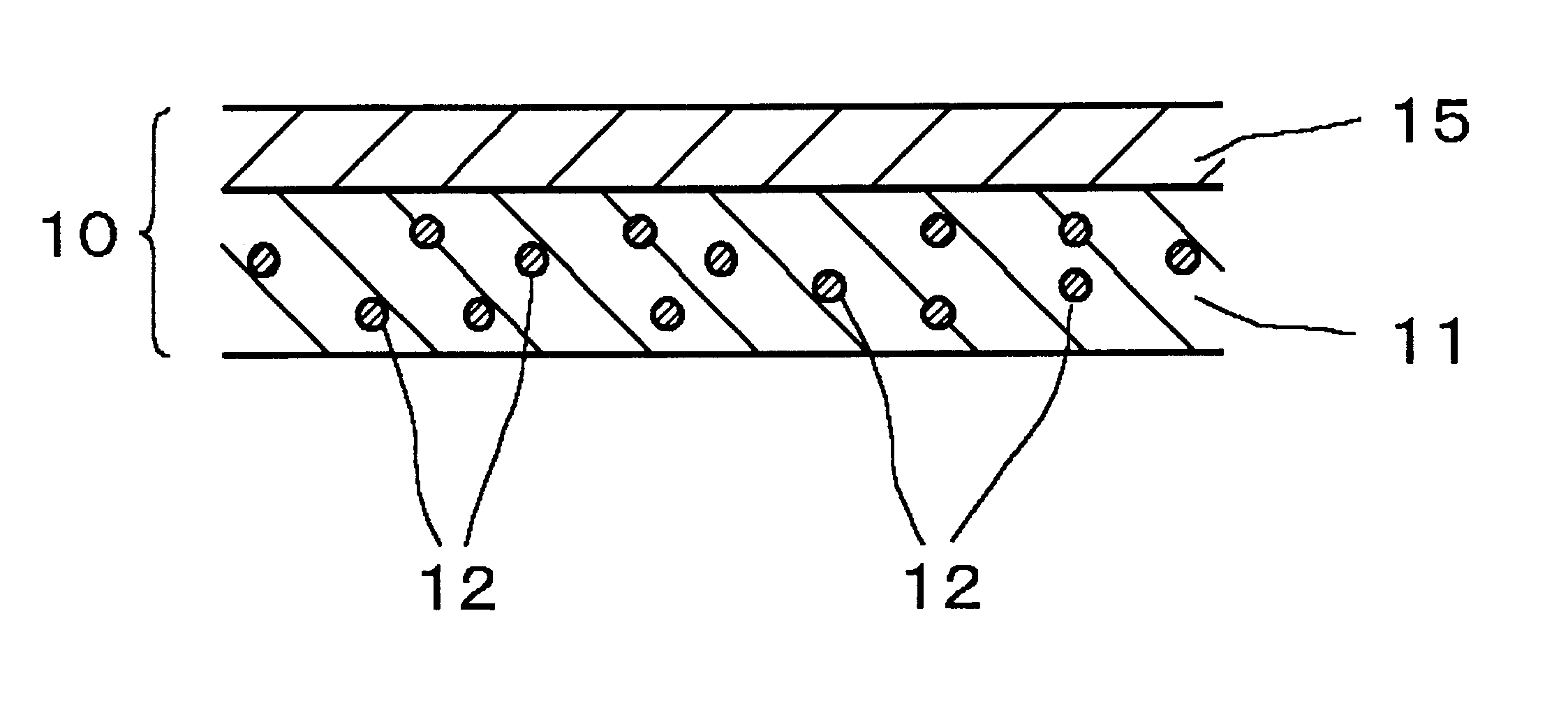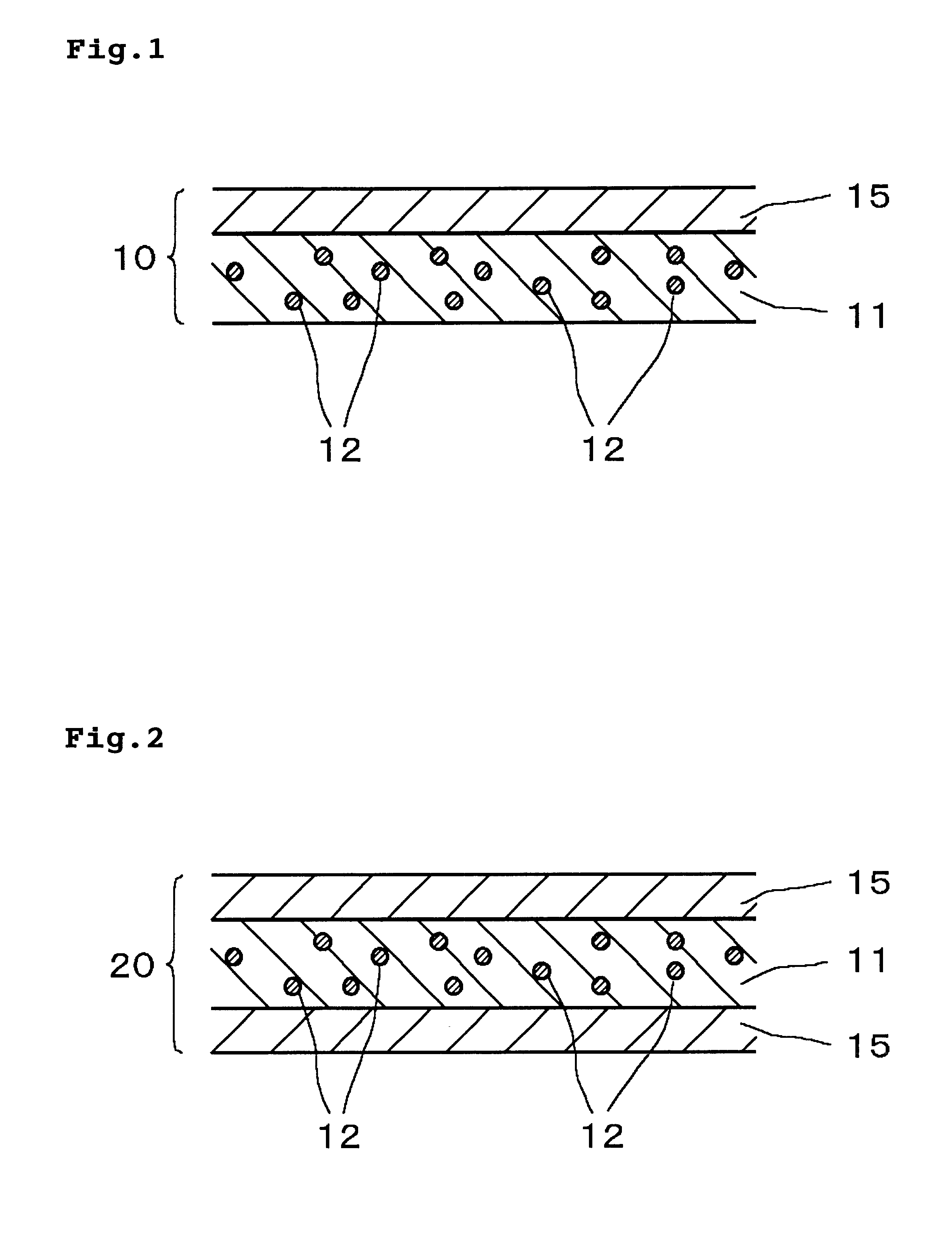Acrylic resin laminated film and laminated molding using the same
- Summary
- Abstract
- Description
- Claims
- Application Information
AI Technical Summary
Benefits of technology
Problems solved by technology
Method used
Image
Examples
example 2
Pellet of acrylic resin A, per se, was used to form a hard layer. A plate-shaped test piece formed from this resin had a flexural modulus of 3,200 MPa, which was measured according to JIS K 7171. In the same manner as in Example 1 except the resin for the hard layer, the resins were co-extruded so that the hard layer and the soft layer of the finally resulting laminated film became 10 .mu.m thick and 115 .mu.m thick, respectively. A laminated body in the form of film thus co-extruded was cooled in a manner to bring the both sides thereof into complete contact with polishing rolls (metal rolls). Thus, there was obtained a laminated film comprising the two different acrylic resins and having an overall thickness of 125 .mu.m.
example 3
Pellet of acrylic resin A, per se, was used to form a hard layer. A plate-shaped test piece formed from this resin had a flexural modulus of 3,200 MPa, which was measured according to JIS K 7171. On the other hand, 55 parts by weight of acrylic resin A in the form of pellet and 45 parts by weight of double-layered acrylic rubber particles D were melt-kneaded to give a resin pellet for a soft layer. A plate-shaped test piece formed from the acrylic resin for the soft layer had a flexural modulus of 1,200 MPa, which was measured according to JIS K 7171. Thereafter, according to Example 1, the resins were co-extruded so that the hard layer and the soft layer of the finally resulting laminated film became 10 .mu.m thick and 115 .mu.m thick, respectively. A laminated body in the form of film thus co-extruded was cooled in a manner to bring the both sides thereof into complete contact with polishing rolls (metal rolls). Thus, there was obtained a laminated film comprising the two differen...
example 4
Pellet of acrylic resin A, per se, was used to form a hard layer. A plate-shaped test piece formed from this resin had a flexural modulus of 3,200 MPa, which was measured according to JIS K 7171. On the other hand, 10 parts by weight of acrylic resin A in the form of pellet and 90 parts by weight of triple-layered acrylic rubber particles C were melt-kneaded to give a resin pellet for a soft layer. A plate-shaped test piece formed from the resin for the soft layer had a flexural modulus of 1,250 MPa, which was measured according to JIS K 7171. Thereafter, according to Example 1, the resins were co-extruded so that the hard layer and the soft layer of the finally resulting laminated film became 10 .mu.m thick and 115 .mu.m thick, respectively. A laminated body in the form of film thus co-extruded was cooled in a manner to bring the both sides thereof into complete contact with polishing rolls (metal rolls). Thus, there was obtained a laminated film comprising the two different acryli...
PUM
| Property | Measurement | Unit |
|---|---|---|
| Length | aaaaa | aaaaa |
| Length | aaaaa | aaaaa |
| Flexural modulus | aaaaa | aaaaa |
Abstract
Description
Claims
Application Information
 Login to View More
Login to View More - R&D
- Intellectual Property
- Life Sciences
- Materials
- Tech Scout
- Unparalleled Data Quality
- Higher Quality Content
- 60% Fewer Hallucinations
Browse by: Latest US Patents, China's latest patents, Technical Efficacy Thesaurus, Application Domain, Technology Topic, Popular Technical Reports.
© 2025 PatSnap. All rights reserved.Legal|Privacy policy|Modern Slavery Act Transparency Statement|Sitemap|About US| Contact US: help@patsnap.com


